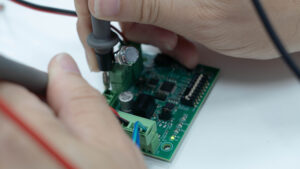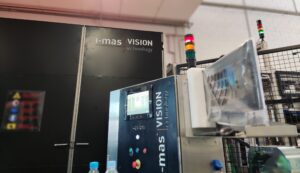Industrial automation is no longer exclusive to large corporations. Today, thanks to collaborative robots (cobots), industrial SMEs can benefit from flexible, affordable, and quick-to-implement solutions.
In environments where production is varied, batches are small, and adaptability is key, cobots become a strategic ally for competing in increasingly demanding markets.
What are collaborative robots and why are they of interest to SMEs?
Unlike traditional industrial robots, cobots are designed to work alongside people without the need for extensive safety systems. They incorporate advanced sensors, intuitive software, and a lightweight structure that facilitates their integration into virtually any production environment.
For SMEs, these characteristics translate into lower barriers to entry for automation:
- Affordable cost: the initial investment is significantly lower than that of a classic industrial robot.
- Ease of programming: no team of robotics experts is required; its use is intuitive and can be managed internally.
- Flexibility: Cobots can switch tasks quickly, making them ideal for variable production runs or short series.
In sectors such as CNC machining, custom parts manufacturing, and the automation of repetitive tasks (assembly, screwing, inspection), cobots are demonstrating accelerated ROI.
Key factors for implementing cobots in short series
For automation with cobots to be truly efficient in an SME, it is essential to follow certain guidelines:
- Identify repetitive, low-value-added processes: tasks such as loading and unloading parts into machines, packaging, or visual quality control are excellent candidates.
- Assess part and process variability: cobots excel in short runs where rapid programming and frequent tooling changes are required.
- Integrate with machine vision systems: combining cobots with 2D or 3D vision allows for better adaptation to variations in the position or shape of parts.
- Train staff: although they are easy to use, it is essential to train operators to participate in programming and monitoring, maximizing productivity.
In this way, SMEs not only automate but also professionalize their processes without losing agility.
Competitive advantages of cobots over traditional automation
The major difference with collaborative robots is not only their cost, but also the operational flexibility they offer:
- Quick reconfiguration: switch from producing one batch to another in a matter of minutes.
- Less space required: their compact size and absence of safety cages allow them to be installed even in small plants.
- Scalability: they can be incorporated progressively, starting with a single robotic cell and expanding according to production needs.
- Safety and ergonomics: they reduce physical strain in repetitive tasks, improving the occupational health of operators.
These advantages make cobots not just an automation tool, but also a driver of organizational transformation: SMEs that adopt them gain in productivity, reduce errors, and position themselves as competitive suppliers in global supply chains.
Limitations and practical considerations in the use of cobots
Although collaborative robots offer clear advantages for SMEs, it is important to bear in mind certain limitations and conditions to ensure successful implementation:
- Safety and regulations: although they are designed to work close to people, regulations (ISO 10218 and ISO/TS 15066) require a risk analysis to be carried out for each application. Additional protection may be necessary when working with dangerous tools.
- Speed and limited load capacity: cobots typically have lower load capacity and speed than traditional industrial robots, so they are not always suitable for very fast cycle processes or very heavy parts.
- Variable ROI: Return on investment can be rapid, but it depends on the type of process, the number of shifts, and the complexity of integration.
- Training and maintenance: require staff training and technical profiles capable of supervising and maintaining the system in the long term.
- Compatibility with existing systems: in environments with older machinery or legacy industrial software, integration may require additional adjustments.
By taking these aspects into account, SMEs can maximize the benefits of cobots, avoiding unrealistic expectations and ensuring successful implementation.
The future of cobots in SMEs
The trend is clear: collaborative robots are no longer a novelty but are becoming standard technology in advanced manufacturing. Their ability to adapt to short runs, their low cost, and their ease of integration with computer vision systems, AI, and digitization make them an indispensable resource for SMEs seeking to remain competitive.
In an environment where the demand for skilled personnel is increasingly difficult to meet, cobots provide a practical solution: automation without losing flexibility. Most importantly, they enable industrial innovation to cease being a privilege of large companies and become a reality within the reach of any business.
I-MAS: we design industrial solutions, not just robots
At I-MAS, we understand that every company has unique production needs. Our approach is not limited to integrating collaborative robots; we develop complete solutions that combine robotics, artificial vision, process control, advanced sensors, and industrial software.
We work with SMEs that need to automate complex processes, improve efficiency in short runs, or guarantee the quality of their products. From parts handling to visual inspection automation, we design tailor-made projects that deliver real value and scalability.
Want to learn more about our services? Contact us or visit our projects section! Contact us or visit our projects section!



